215 vs 235 Tires
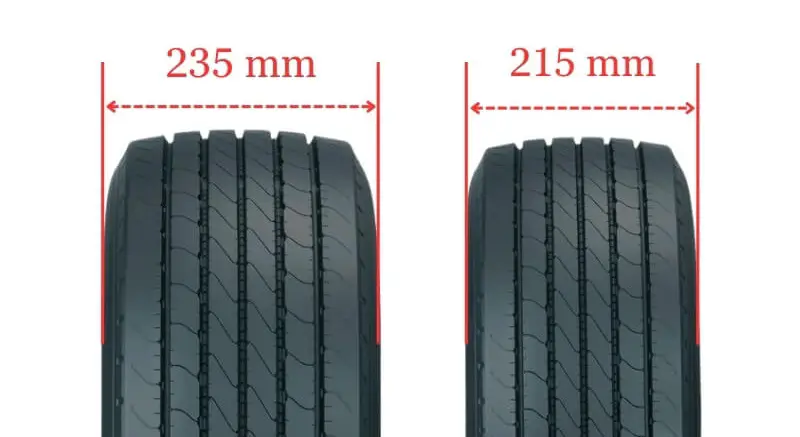
The key difference between a 215 tire and a 235 tire lies in their width – 235 tires are wider than 215 tires. The first number indicates the tread width in millimeters. So, a 215 tire has a tread width of 215 mm, while a 235 tire has a tread width of 235 mm.
This difference in tread width makes the 235 tires 20 mm, which is roughly 0.79 inches wider than the 215 tires. The wider size of the tire can affect various aspects of performance.
215 vs 235 Table
This table provides an easy way to compare the two tire sizes, allowing you to quickly understand their differences.
| Tire Size 215 | Tire Size 235 |
|---|---|
| Narrower Tread Width | Wider Tread Width |
| More Fuel Efficient Gas Mileage | Less Fuel Efficient Gas Mileage |
| Smoother Highway Ride Comfort | Better Impact Absorption Ride Comfort |
| More Aerodynamic Aesthetic Look | More Aggressive Aesthetic Look |
| More Responsive Handling | More Stable Handling |
| Longer Treadlife Durability | Better Traction Durability |
| Lower Road Noise | Better Vibration Damping |
| Better Snow/Ice Traction | Better Mud/Dirt Traction |
Ground Clearance
A slightly wider 235 tire will provide a minor increase in ground clearance compared to a 215 tire. This extra clearance can be beneficial for off-road or rough-rrain driving.
Allowing you to clear large obstacles and not damage the underbody of your vehicle. However, the difference is relatively small at just 0.79 inches.
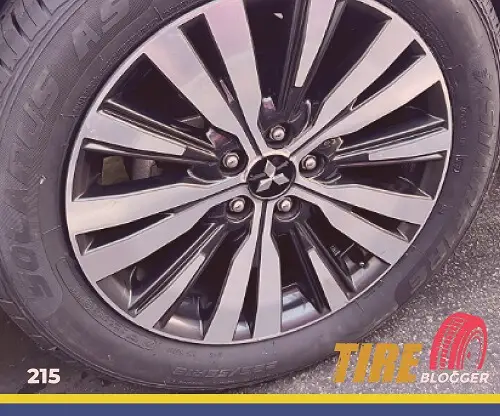
Gas Mileage
The slightly smaller 215 tires, with its smaller contact patch and lower rotational mass, will confer a minor improvement in gas mileage compared to the 235.
This makes the 215 better for daily commuting and long-distance travel, where fuel efficiency is important. The heavier 235 tire creates more rolling resistance, which reduces the economy.
Ride Comfort
The larger 235 tire offers a subtle advantage in ride comfort over uneven surfaces thanks to its larger air volume and increased sidewall height.
This provides better absorption of impacts from bumps and potholes. However, the 215 provides a slightly smoother and quieter ride on smooth highways and city streets.
Aesthetics Look
Visually, the larger 235 tire gives a more aggressive, masculine look, which many drivers prefer for the aesthetics. But the narrower profile 215 tire helps optimize aerodynamic efficiency slightly better. Overall the difference in appearance is fairly minor.
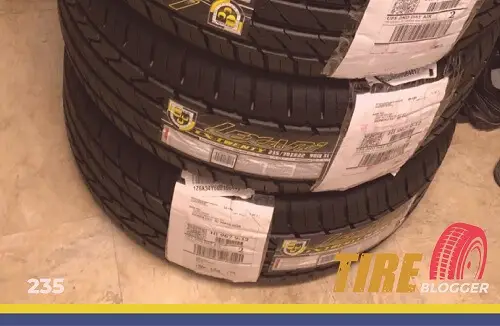
Handling & Stability
The 215 tire allows for marginally quicker steering response and handling due to its smaller size. But the wider 235 tire gives slightly better stability and traction, especially when driving off-road or on loose surfaces. The difference is slight, and most drivers would not notice.
Noise & Vibration
The difference is negligible while the narrower 215 tire transmits slightly less road noise. The 235 absorbs minor road vibration better, but both sizes perform adequately for most drivers’ needs. Tire construction has a greater impact on noise than just the width difference.
Durability & Wear
With a smaller contact patch, the 215 tire exhibits marginally better treadwear over time before needing replacement. But unless you drive extremely high mileage annually, the difference in lifespan between the two tire sizes is insignificant. Both last approximately the same as everyday driving.
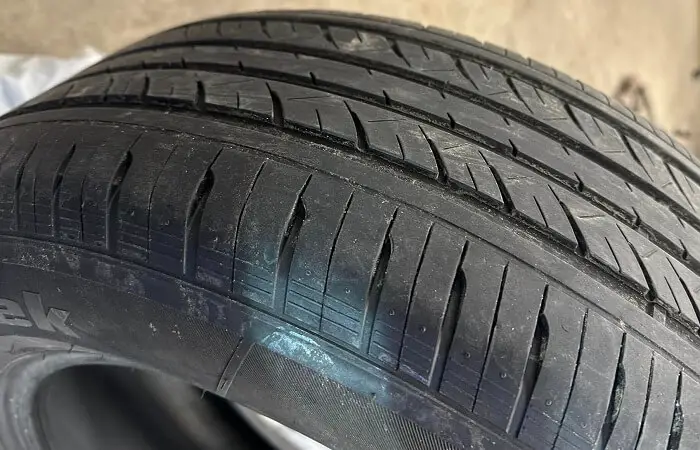
Adverse Conditions
For snow and ice, the narrower 215 can cut through slightly better to reach the road surface below. But for muddy conditions or loose dirt, the wider 235 provides a minor benefit in traction thanks to its larger contact patch. Overall, tire tread design and compound make more of a difference than just width.
Difference Between 215 and 235 Tires
The main difference between 215 and 235 tires is the section width, with 235 tires being 20mm wider than 215 tires. This difference in width affects various aspects of tire performance and handling characteristics.
Can I Use 235 Tires Instead of 215?
Yes, you can use 235 tires instead of 215 tires, as the ideal rim width ranges for both sizes overlap. However, ensure that the aspect ratio and rim diameter remain the same to avoid fitment issues.
If these measurements vary, keep the overall diameter difference at 3% or less to maintain speedometer precision and vehicle performance.
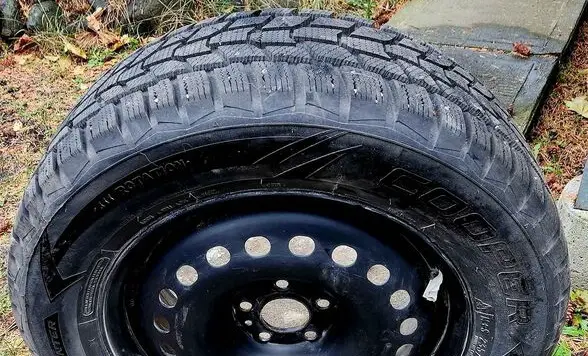
Can I Use 215 Tires Instead of 235
Yes, you can use 215 tires instead of 235 tires. The ideal rim width range for 235 tires (7.0-8.5 inches) overlaps with the range for 215 tires (6.5-8.0 inches), making the switch possible.
However, ensure the aspect ratio and rim diameter match your current setup. If the aspect ratio or rim diameter does not match, the overall diameter difference should stay within 3% to avoid affecting speedometer accuracy and vehicle performance.
Can I Put 235 Tires on 215 Rims?
Yes, you can put 235 tires on rims designed for 215 tires. The ideal rim width range for 215 tires (6.5-8.0 inches) overlaps with the range for 235 tires (7.0-8.5 inches), ensuring proper fitment.
Can I Put 215 Tires on 235 Rims
Yes, you can put 215 tires on rims designed for 235 tires. The ideal rim width range for 235 tires (7.0-8.5 inches) overlaps with the range for 215 tires (6.5-8.0 inches), ensuring proper fitment.
Our Observation
After comparing the minor differences between 215 and 235 tire sizes, I don’t believe either has a significant overall advantage. The 235 is slightly wider and provides a touch more ground clearance, stability, and traction.
Still, it comes at a small cost to handling, fuel economy, and wear. The 215 offers a marginally smoother ride and responsiveness. The differences seem negligible, and most drivers would likely be satisfied with either width.
Based on the subtleties discussed, I don’t have a strong preference between the two sizes. My choice would depend more on the tread design, tire construction, and performance ratings that best fit my priorities, not simply going with a 215 vs. 235 width.

Meet Caitlin McCormack, a Tire Size Expert and Blogger Passionate About Everything Related to Tires. With Years of Experience in the Tire Industry, Caitlin Has Become an Expert in Tire Sizes and Their Impact on Vehicle Performance.
